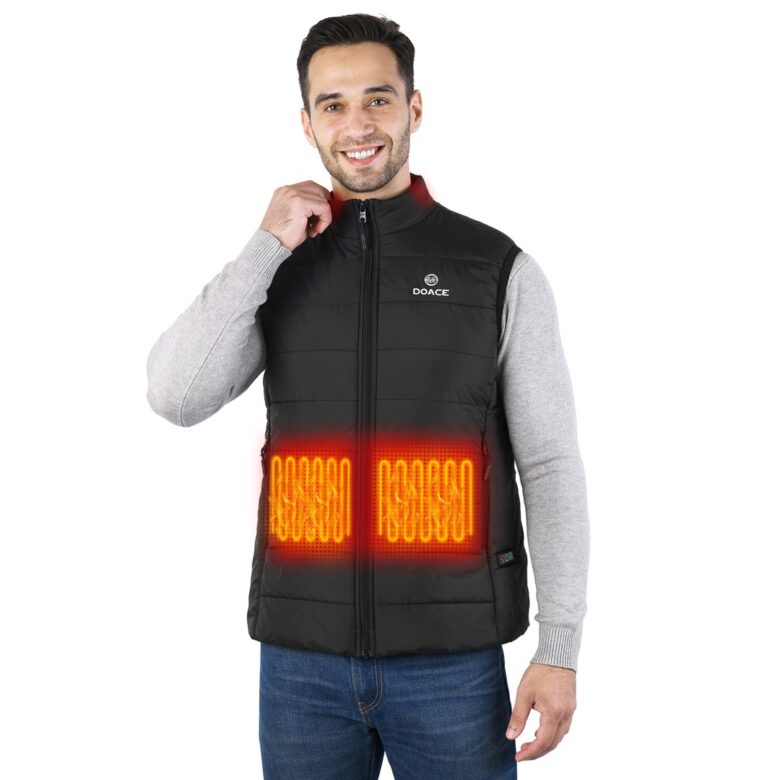Heated vests are body suits that use heating pads to keep the wearer warm. They are often worn by people who work in cold environments, such as doctors, nurses, and firefighters. Heated vests have a controller that can set the temperature from 68 degrees Fahrenheit to 104 degrees Fahrenheit. But what do you do if your battery starts to die? Thankfully, the answer is simple: Replace it!
Contents
What are the different types of heated vest batteries?
There are a few different types of batteries, each with its own benefits and drawbacks.
- Alkaline: These batteries are the most common type used in heated vests. They have a long life span and can be recharged relatively quickly. However, they don’t deliver as much heat as other types of batteries and can get hot to the touch.
- Nickel-Cadmium: These batteries are less common but offer better heat output than alkalines. They also last longer but can become more unstable over time, leading to shorter battery life and potential safety hazards.
- Lithium Ion: These batteries are the most powerful and offer the best range of temperature options. However, they’re more expensive than other types of batteries and may not be suitable for all applications due to their high wattage output.
Some batteries have a lifespan of 10 hours, while others can last for up to 30 hours. The lifespan of a battery depends on how often it is used, how much heat it produces, and how well it is maintained.

How much power does a heated vest use?
A heated vest typically utilizes 10 watts of power. This amount of power will last for around an hour. If the weather is cold, the battery may last a little bit longer; however, it is always best to have fresh batteries on hand if you are going to be using your heated vest for an extended period of time.
When Should you replace your battery?
Replacing the battery every few years is a good practice, as it will keep your vest working optimally. If you don’t have your vest serviced regularly, the battery may not be able to hold a charge as well, which could result in decreased performance and potentially even a fire. And of course, if you notice something’s wrong with the battery, replace it immediately.
How long does it take to charge?
Depending on the model, it can take up to four hours to fully recharge a battery for a heated fleece vest. This means that you’ll likely need to plan ahead if you want to use your vest regularly.

How to choose the right heated vest for you
First, what activity are you planning on using the vest for? Are you looking for something for skiing or snowboarding? If so, you’ll want to consider both the weight and insulation of the vest. Models designed for sports typically have more insulation and are heavier, making them good for colder climates but not as good for warm-weather activities like running or biking.
Another thing to consider is your body type. Most models come in two sizes: small and large. The small size is designed to fit people with a chest size of 34-38 inches, while the large size fits people with a chest size of 44-48 inches. They work best if they fit snugly around your torso so that heat can be evenly distributed. If the vest is too big or too small, it will not work as well as it could and you’ll likely end up feeling hot and uncomfortable instead of comforted and warm.
The type of battery that powers a heated vest also comes into play when choosing one. They that use rechargeable batteries typically have an indicator light that tells you how much power is left in the battery. Some models also come with an AC adapter so that they can be used without batteries if needed. Rechargeable batteries tend to last longer than those that use AC adapters, but either type can be used if you are careful not to overcharge the battery.
When to Use a Heated Vest
There are several different times when using a heated vest would be beneficial.
If the temperature is below freezing: A heated vest can help keep you warm in temperatures as low as 32 degrees Fahrenheit. Additionally, the heat will help speed up your body’s natural warmth-retention ability.
If it’s cold outside and you’re exercising: A heated vest can also help improve your conditioning by increasing your heart rate and burning additional calories. For those who are new to working out in cold weather, wearing a vest can make the experience more comfortable and successful. They can also be extremely therapeutic. They can help relieve conditions like chronic pain or anxiety by providing physical relief. Many people find that wearing a heated vest helps them relax and reduces their stress levels.
If you work out outdoors: Weather permitting, wearing a heated vest outdoors will increase your comfort level significantly. In colder climates, having extra clothing layers on top of your regular clothing will still not be enough to keep you warm unless it is extremely windy outside or the temperature falls below freezing at night. Wearing a heated vest will help to keep you warm and comfortable, even if the temperature drops below freezing. They can also be used as heating pads. Simply place them on your body and let the heat helps to relax your muscles and relieve injury pain.

Conclusion
Heated vest batteries can last anywhere from a few hours to a couple of days, but the length of time they last will depend on how often you use them and how hot the temperature is inside the vest. Keep in mind that if your battery runs out or gets too hot, it will not work and you will need to replace it. Be sure to keep an eye on your battery life so that you don’t run out of heat during an important activity!
